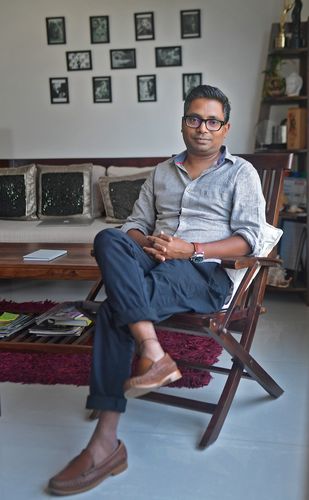Posters of the five films he has directed, along with one from Federico Fellini’s Amarcord and another from Sergio Leone’s The Good, the Bad and the Ugly, hang on the walls of filmmaker Raj Kumar Gupta’s Mumbai office. He says he was no film buff while growing up in Jharkhand, and watched only the commercial ones. Rather, it was his interest in creative writing that brought him to Mumbai. He got drawn into the world of entertainment after assisting Anurag Kashyap in two films and writing for television. In 2008, he made the critically-acclaimed Aamir. Three years later, in 2011, he came out with No One Killed Jessica and then, in 2013, Ghanchakkar. His 2018 film, Raid, was a huge hit and entered the Rs100 crore club. His latest, India’s Most Wanted—starring Arjun Kapoor, Rajesh Sharma, Shantilal Mukherjee and Aasif Khan—just released.
He wanted to make the film—about the arrest of a terror mastermind—after reading news reports and researching the subject in 2013. He took almost six years to make it. Although it seems like it, Gupta does not want to explicitly state that the film is about Yasin Bhatkal, who was listed on the National Investigation Agency’s Most Wanted list until his arrest on the India-Nepal border near Motihari, Bihar, in August 2013.
But the story stayed with him for a long time after he read about it.
“What remained with me was how India’s most wanted was captured without firing a single shot,” says Gupta. “And how five unlikely men, without any support, decided to pool in their resources and execute the operation. They were so passionate about making sure that this person was caught and that people were safe. That such a crime was not repeated again. If that is not fascinating, then what is?”
Researching the film and finding those who executed the operation was difficult. “These are not people who will come forward and take credit for what they have done,” he says. “They did it because they wanted to. So, to unravel the layers behind the investigation was not easy.”
At one point, in 2014, he thought he had reached a deadend. It was only after someone called him a few months later with important details that he went ahead with it. Now, he says he has met enough people to get the details of what really happened. The research and the writing took so long that he completed Raid in between. But even after the script was ready, shooting was a challenge as he wanted to do it in actual locations. Seventy per cent of the film was shot in Nepal; this is one of the first Indian films to be extensively shot there.
In the last two years, Bollywood has been churning out many spy dramas. But Gupta denies that he was trying to ride this wave when he decided to make India’s Most Wanted or set the release date around Indian elections. “It required a lot of research and time to flesh out the script and delve into the minute details,” he says. “At that time, I was not even sure whether I would be able to get in touch with the right source for my script to be authentic.” There are too many variables in filmmaking, he says. Like not being sure whether he would be able to find a producer or actors. “When I was planning, I was not aware that the elections would be now, or who would come to power, or what the film’s impact would be,” he says. “It is wrong to say that I am riding the wave [of spy dramas]. I have just been trying to make films that I believe in.”


